By Louise Irvine
High tea or afternoon tea - which would you rather attend? Find out more as we explore Wedgwood’s contribution to this British social ritual in our charming Art of Tea exhibition.
In the 18th century, tea was a luxury beverage from China affordable only to royalty and the aristocracy. It was usually served after dinner when ladies retired to the drawing-room. Queen Charlotte commissioned a tea service and tabletop accessories in Wedgwood’s refined creamware body in 1765. The success of this order led to Josiah Wedgwood’s appointment as “Potter to Her Majesty” and his ivory body being named Queen’s Ware. The Wedgwood creamware Veilleuse fueled by burning candles or oil was used for keeping beverages warm.
In addition to Queen's Ware tea services, Wedgwood also made teapots in his Black Basalt stoneware body. However, he was technically challenged with the porcelain texture of the Basalt teapots glazed on the inside as they were liable to break with hot water. Initially, he preferred to make round teapots rather than the fashionable oval or fluted varieties as they were molded in two parts and prone to splitting along the seams.
In the 1770s, Josiah Wedgwood was focused on his greatest innovation, which was known as Jasper Ware. He produced over 5,000 trials over a period of three years to perfect his new matte body, which was a closely guarded secret recipe following its launch in 1775. The stoneware body could be stained with mineral oxides in a wide range of hues. Blue and sea green were the first to be developed as ground colors for the white relief decoration in neo-classical style. Today we even refer to a shade of pale powder blue as Wedgwood Blue.
Throughout his career, Wedgwood was an astute marketing man and realized the value of celebrity endorsement. He opened London showrooms so that his customers could personally select their tableware from the wide choice available and the elegant rooms became a fashionable destination for the carriage trade. As Josiah Wedgwood specified, “And besides room for my Ware, I must have room for my Ladys for they sometimes come in very large shoals together."
In the mid-19th century, the ritual of afternoon tea was popularized by Anna, Duchess of Bedford, one of Queen Victoria’s ladies in waiting. She did not like the long gap between mealtimes in high society and craved some light sustenance in the afternoon. Ladies of leisure got together in the afternoon to enjoy some teatime sandwiches, cake, and conversation spiced with the latest gossip. Tea was served on low parlor chairs or in the garden during the summer months.
By the end of the century, tea was imported from India and became affordable to a much wider audience. A hearty high tea was served at the end of a long day of labor. The worker’s family gathered around a high dinner table to enjoy a hot, filling meal washed down by a pot of strong tea. A reviving cup of tea was also drunk throughout the day as a pick-me-up and the traditional British cuppa was born.
Thanks to Angela Scott, who has loaned many teapots to the Art of Tea exhibition, we have several early Wedgwood teapots in Black Basalt and Jasper Ware on display. We also have interesting acquisitions made by Arthur Wiener, such as the teapot made to celebrate the coronation of Queen Elizabeth II, which features a bust of Her Majesty and Prince Philip. Queen Elizabeth was obviously an admirer of Wedgwood blue as she has worn a hat in this style!
During the last two centuries, Jasper Ware has been made in many different colors, sometimes with decoration in three different hues known as tricolor. As well as solid-colored Jasper Ware, Wedgwood also developed a less expensive Jasper Dip where the white body was tinted with various surface colors. Teapots have continued to be made in many different shapes and sizes including some miniature designs, which can be seen at WMODA. Jasper Ware continues to be made by Wedgwood today and historical styles have been revived for important occasions. For the Lord Wedgwood Collection, honoring the company’s former traveling ambassador, 18th century designs by Lady Templeton were brought back on teapots. The Wiener Museum has a Wedgwood blue teapot depicting Charlotte at the tomb of Werther taken from the famous romantic story about unrequited love by Goethe.
To celebrate 250 years in business, the company introduced the Distinguished House of Wedgwood collection, which included the Lover’s Tea Set. This dainty service for two people features the Hope and Anchor design in tricolor Jasper Ware and was beautifully displayed in a presentation box as can be seen at WMODA.
If you have the leisure time, traditional British afternoon tea, served in the late afternoon, is a treat to attend. Hopefully, we will be able to host our indulgent tea parties and tours at WMODA again soon so that you can discover more about the importance of tea drinking for the ceramics industry.
Read more about tea at WMODA...
For more information on Wedgwood visit the Wedgwood Museum
Thank you to the Wedgwood Museum in Barlaston, England for their assistance with this article
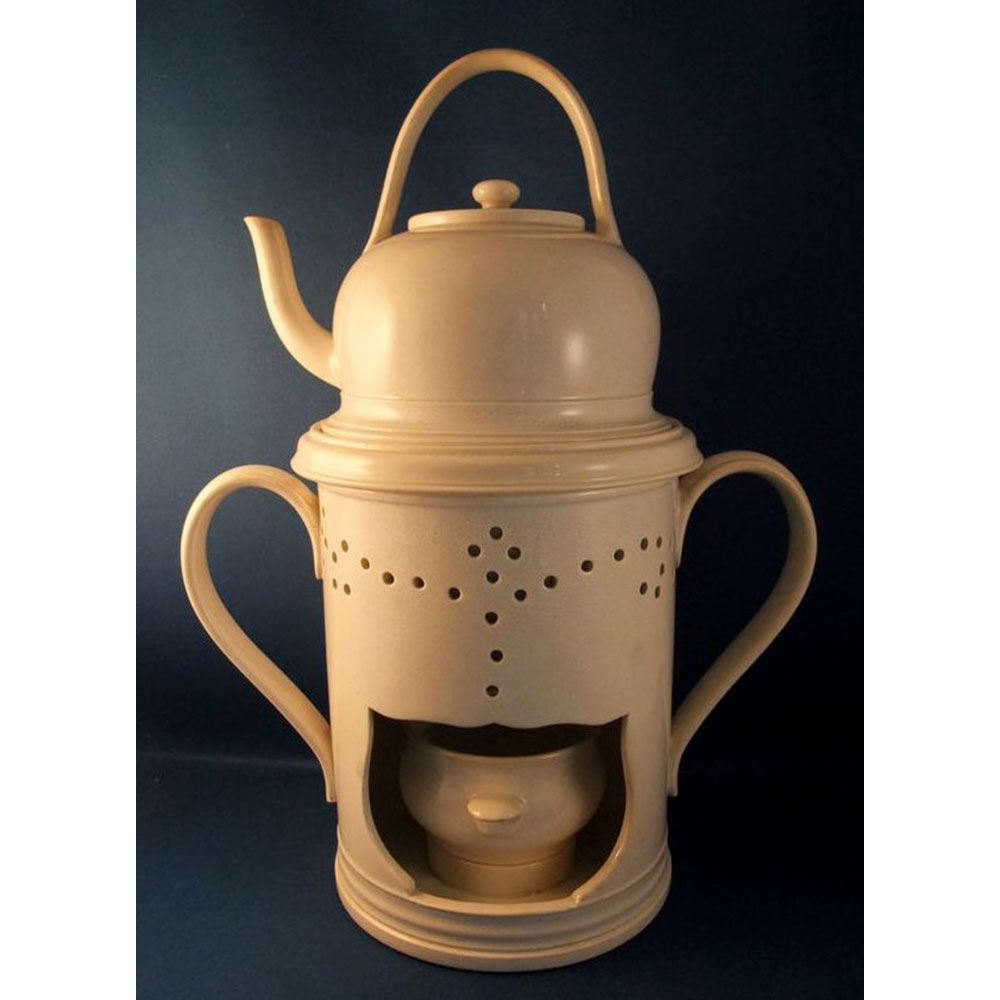
Wedgwood Queen's Ware Veilleuse
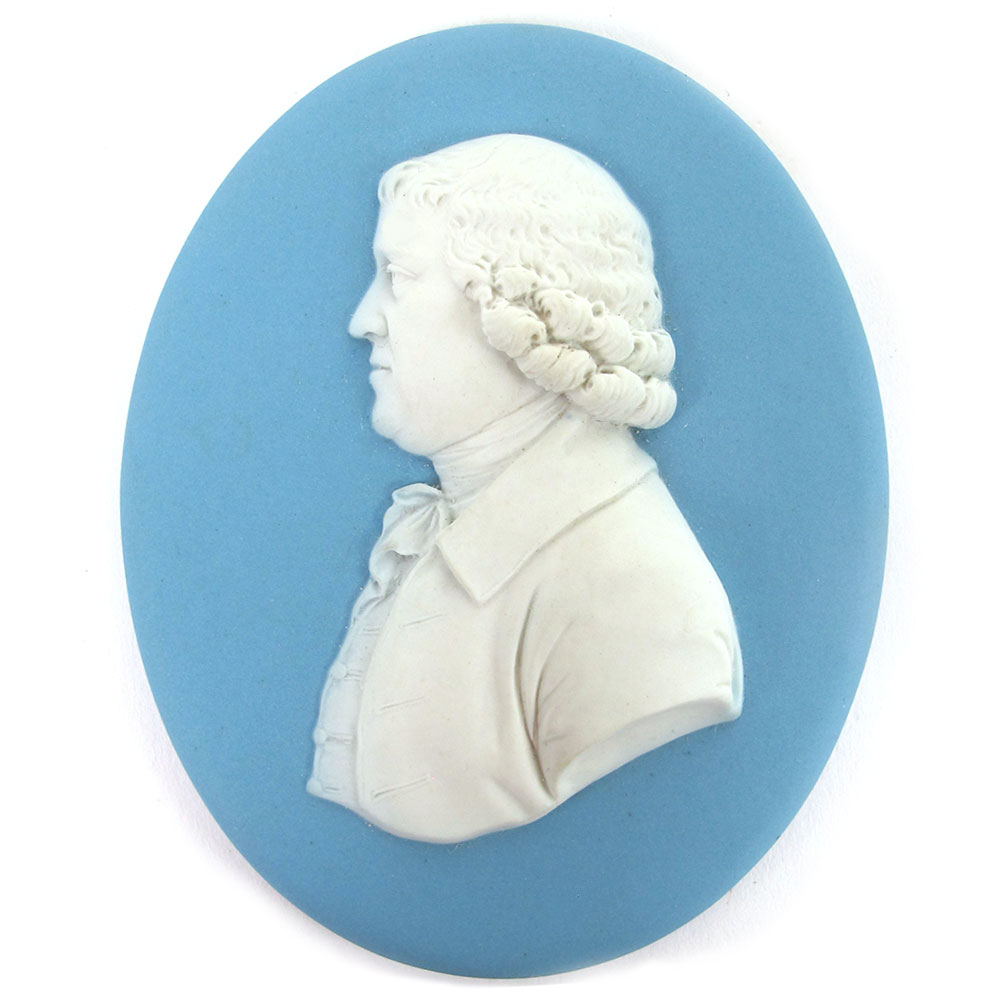
Josiah Wedgwood
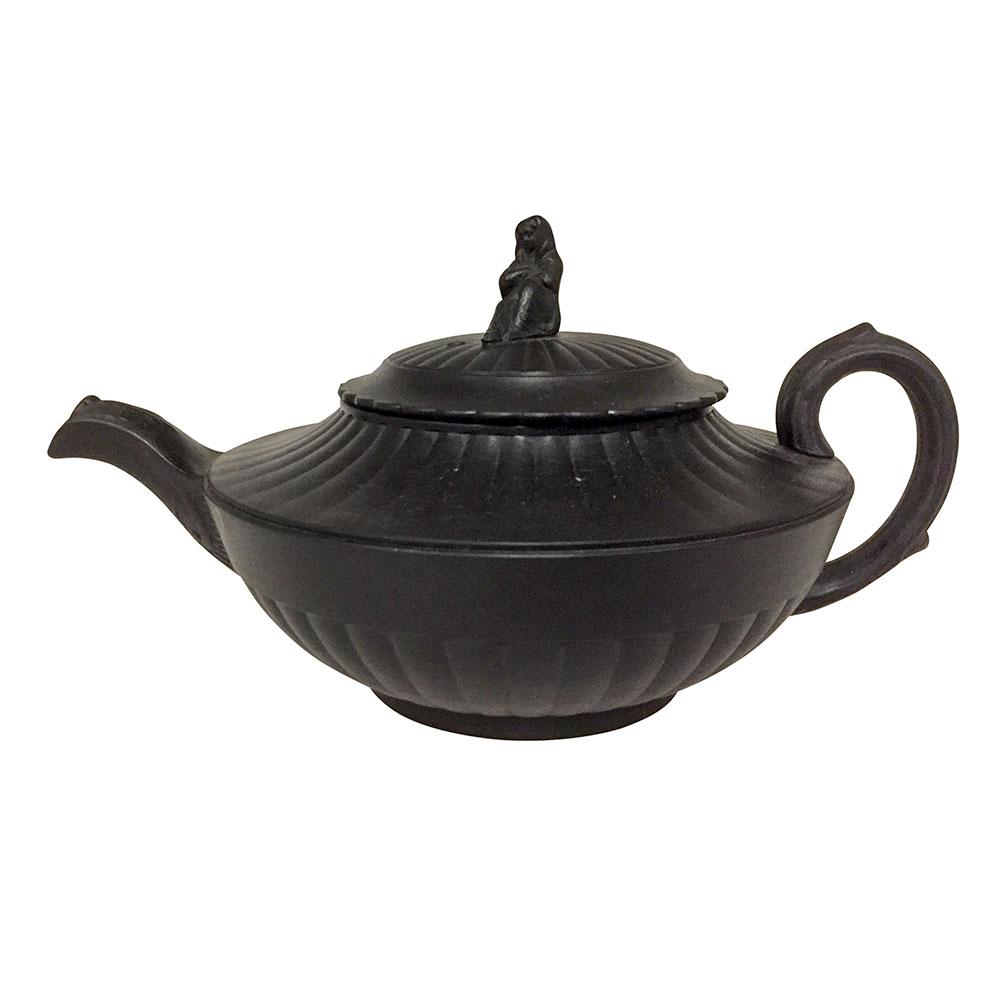
Wedgwood Black Basalt Teapot
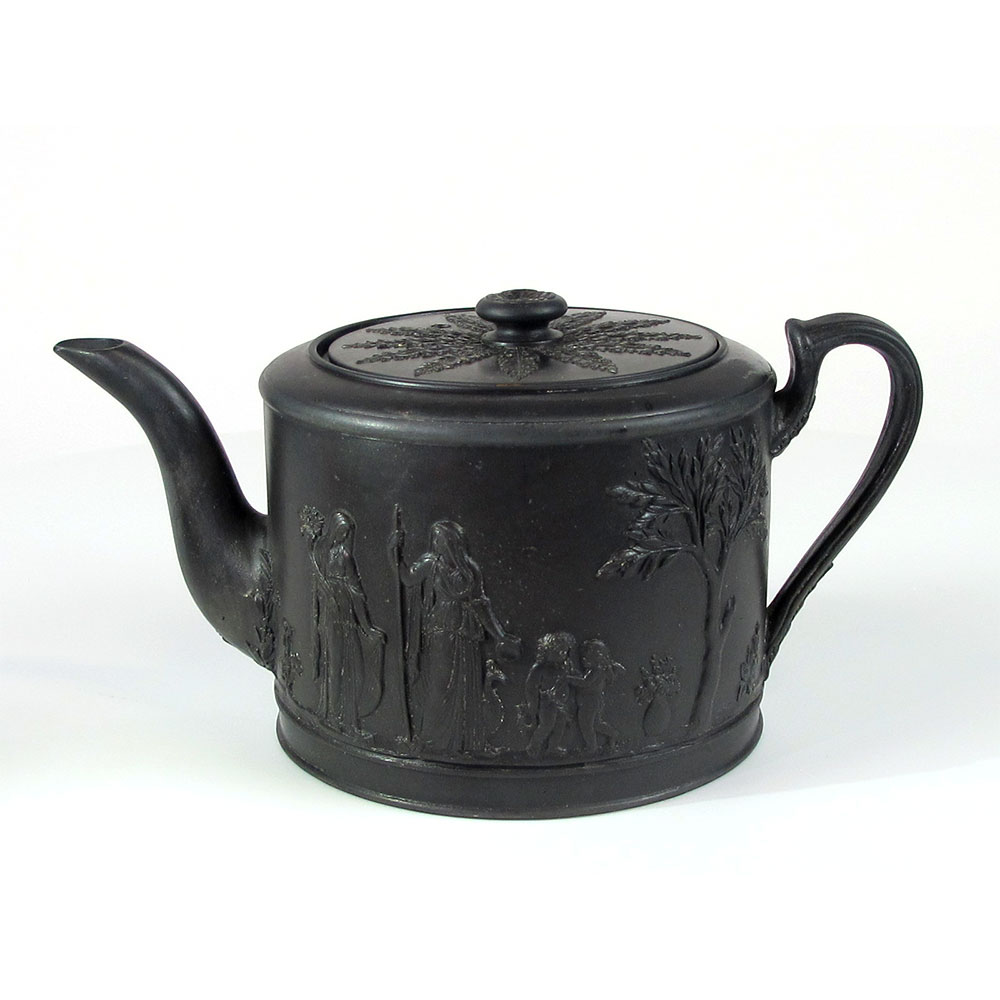
Wedgwood Black Basalt Teapot
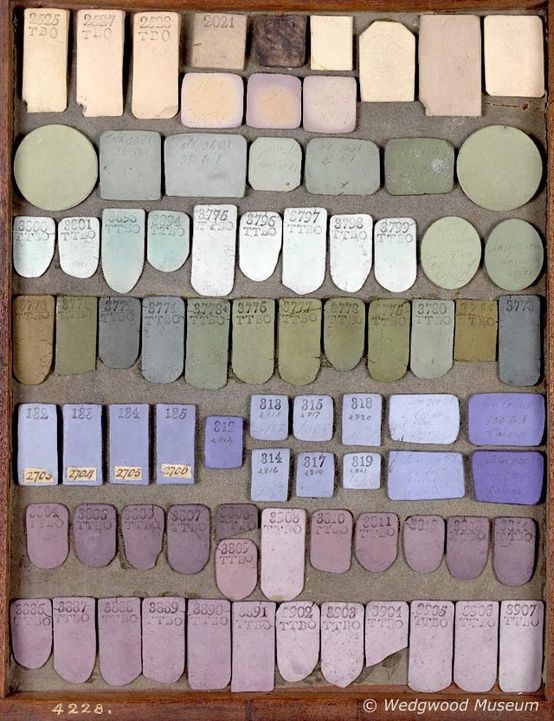
Wedgwood Jasper Ware Trials
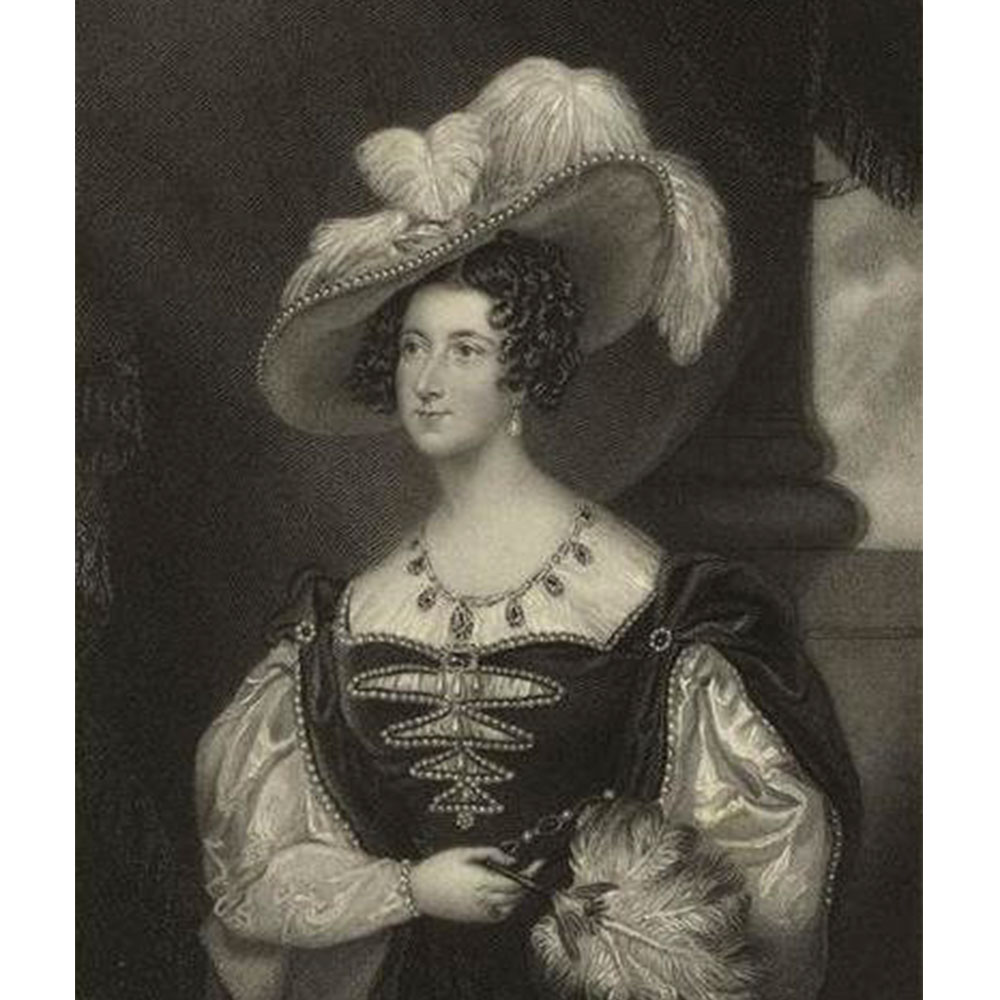
Anna, Duchess of Bedford
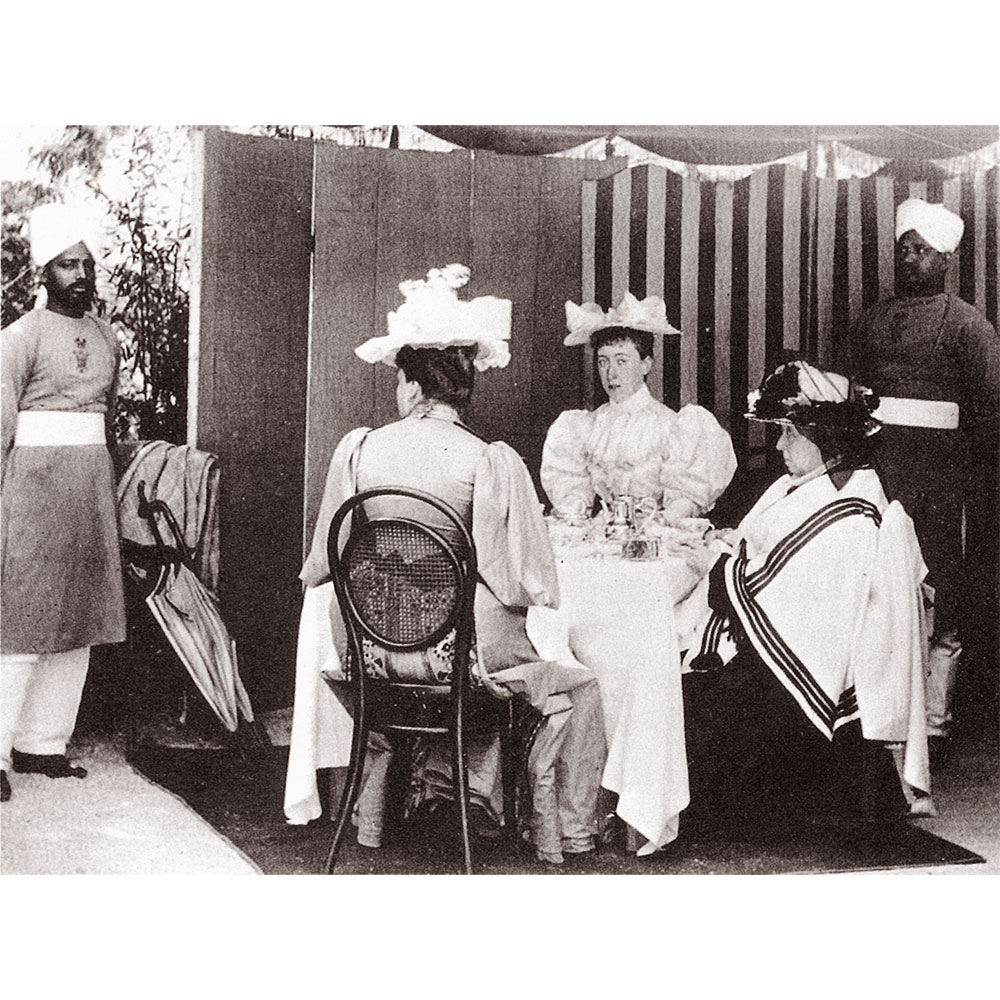
Queen Victoria taking tea
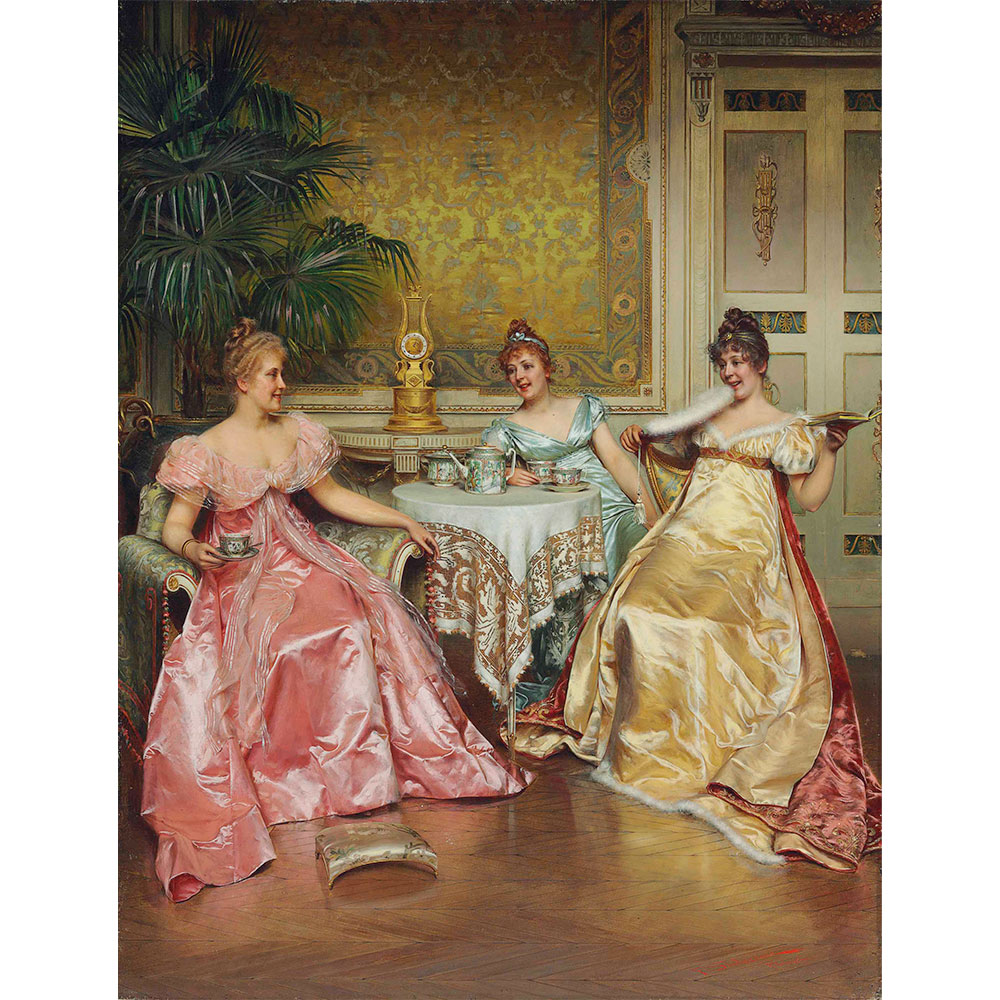
Tea for Three by C. J. F. Soulacroix
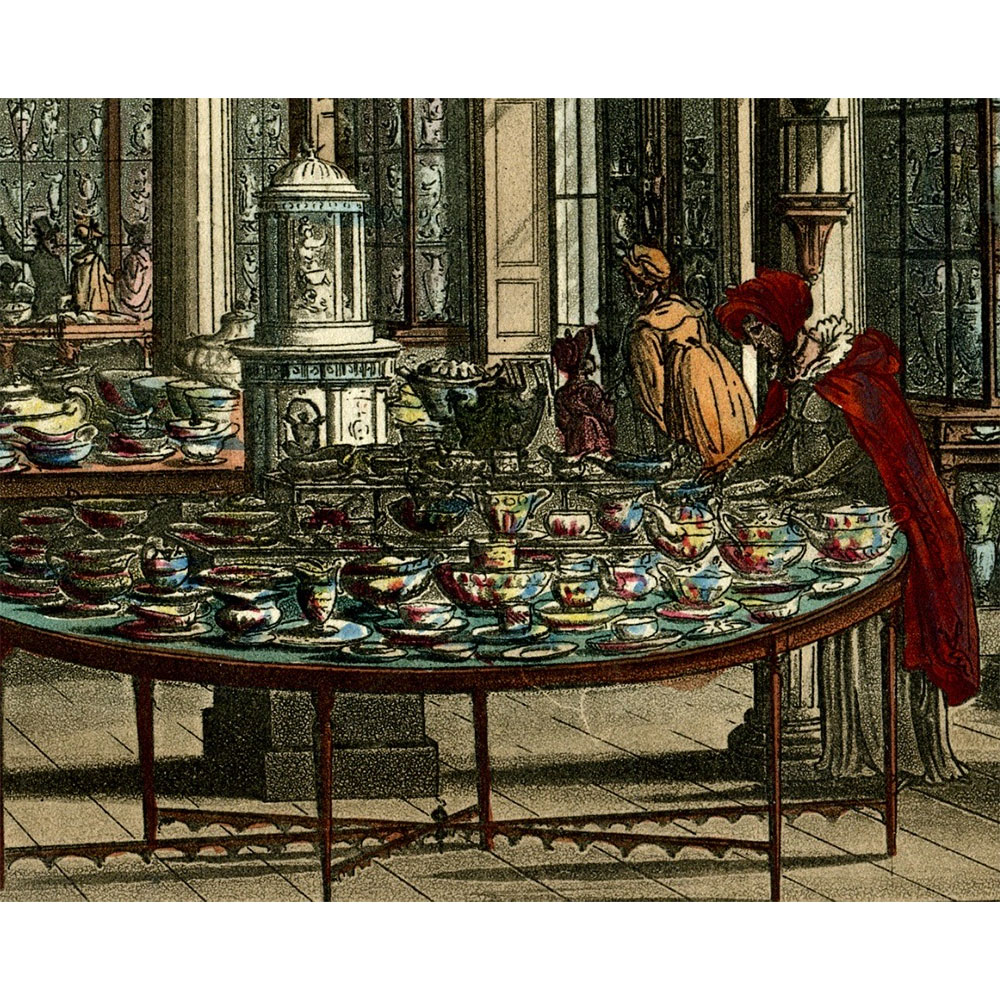
Detail of the Wedgwood Showroom
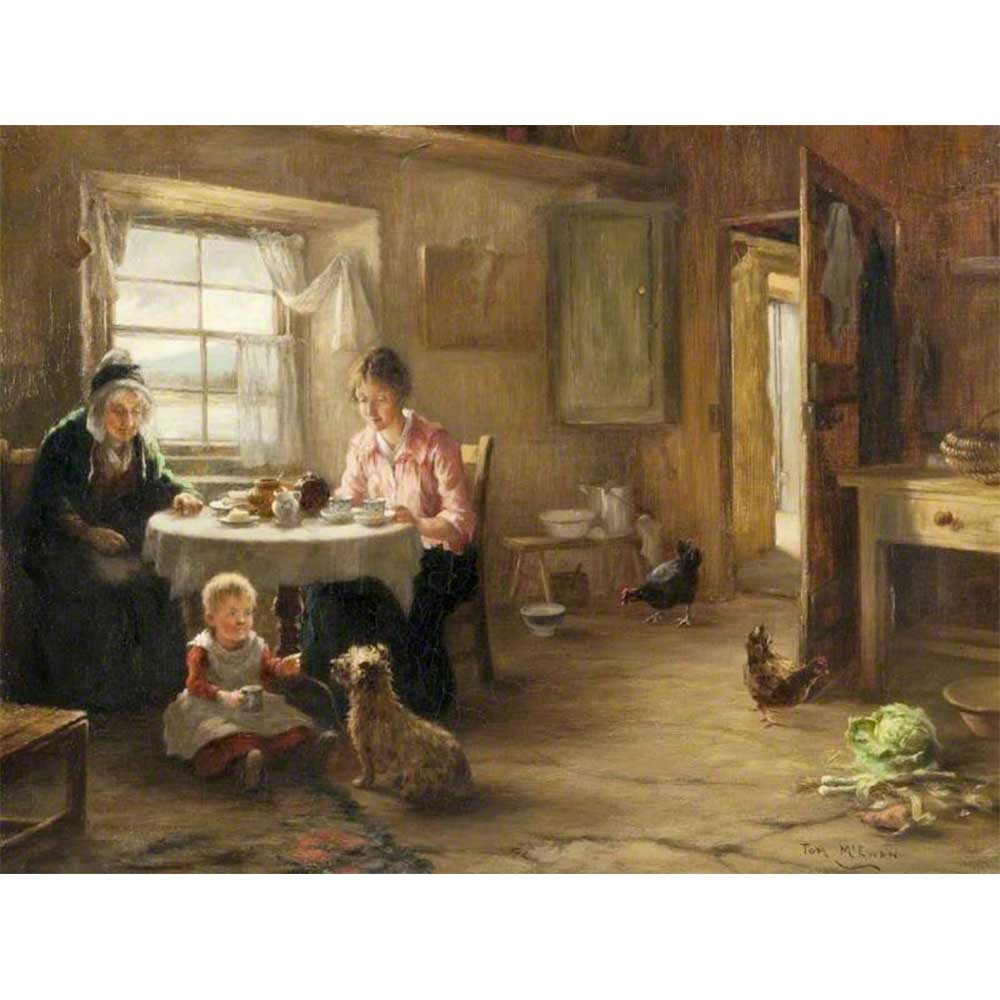
Teatime by T. McEwan
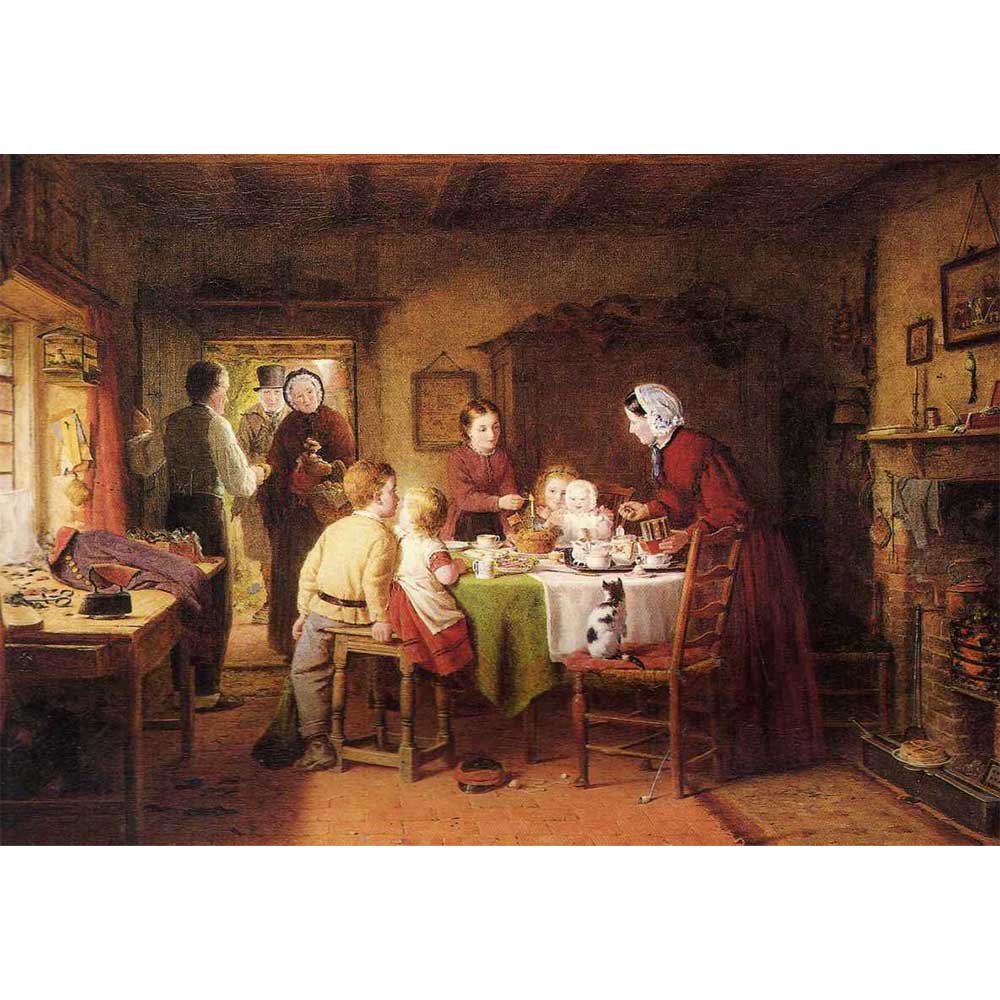
A Family Tea Party
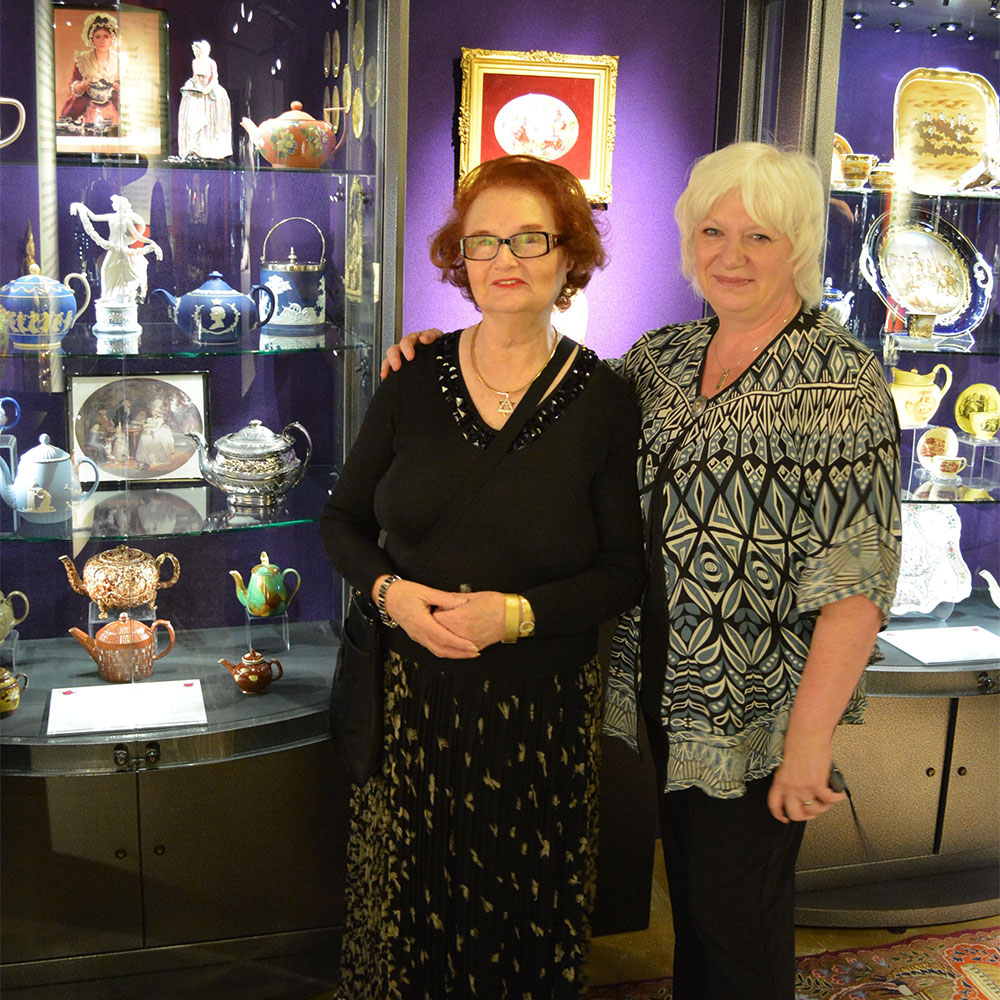
Angela Scott & Louise in The Art of Tea Exhibition
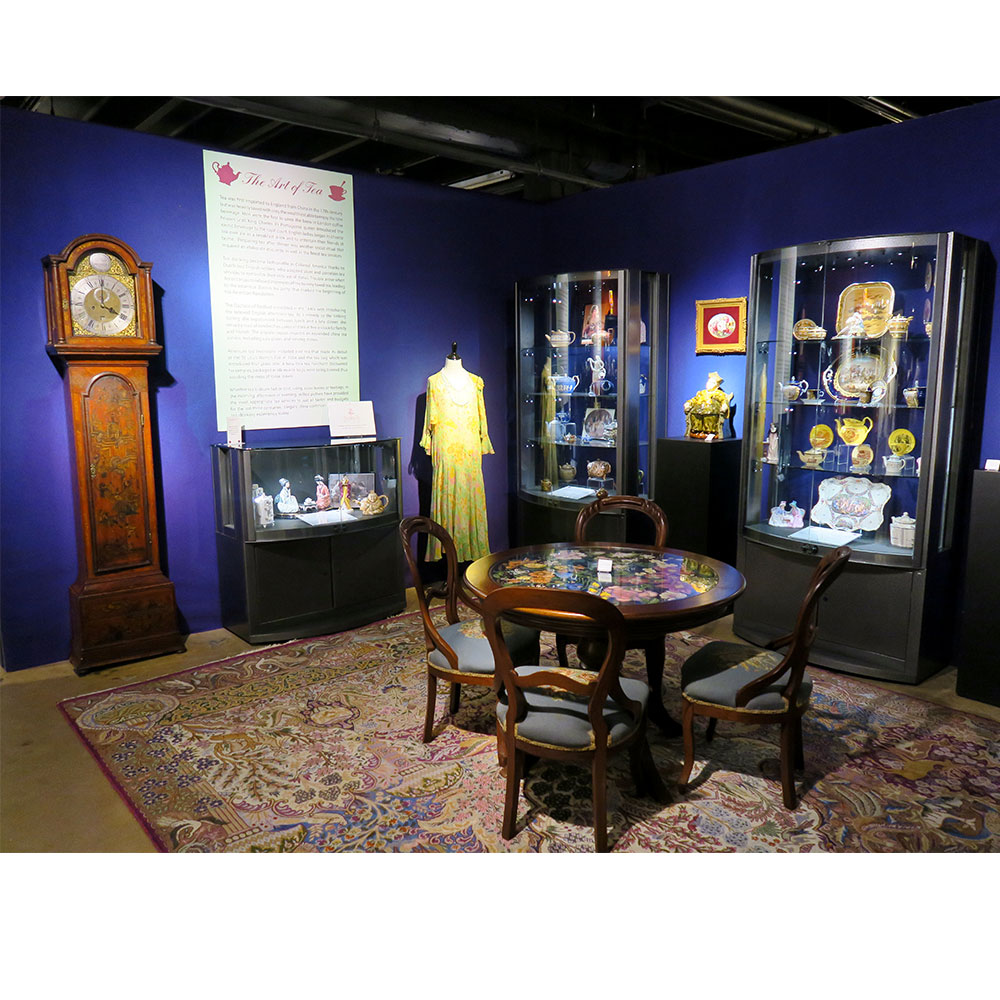
The Art of Tea Exhibition
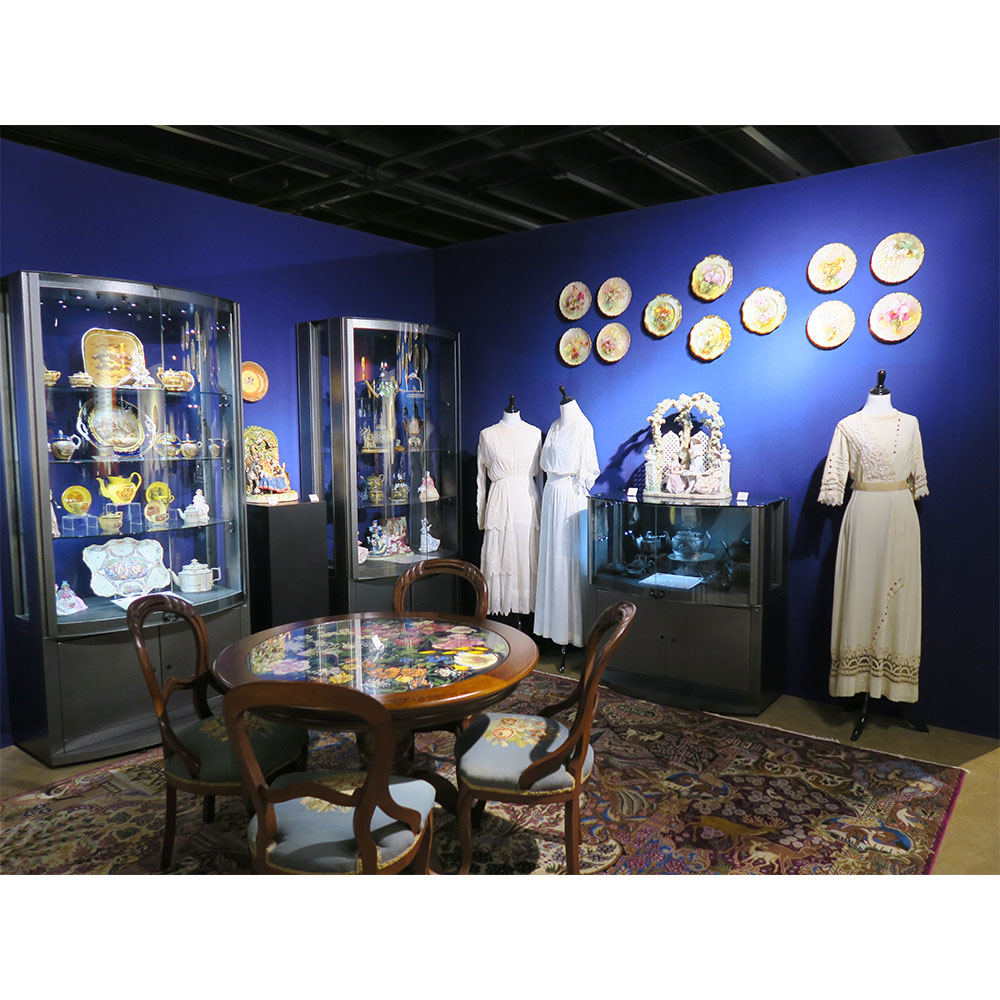
The Art of Tea Exhibition
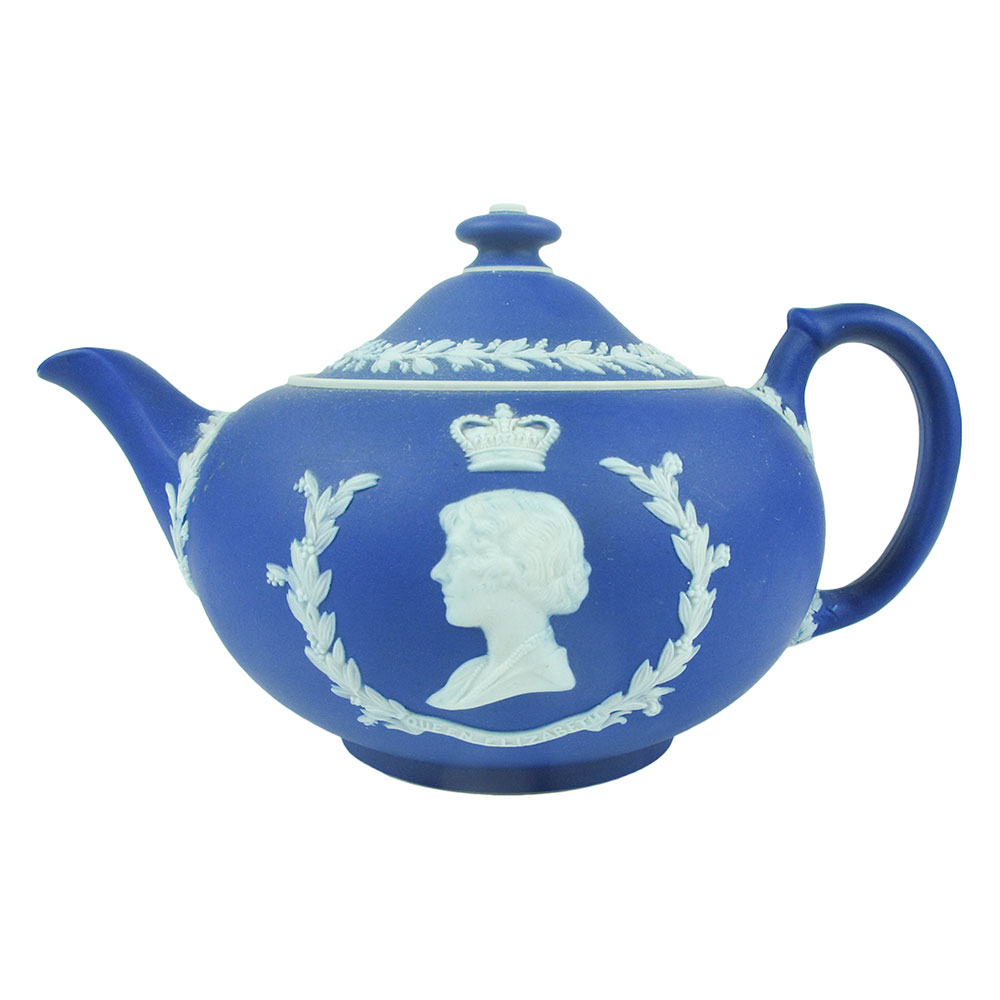
Wedgwood Queen Elizabeth II Coronation Teapot
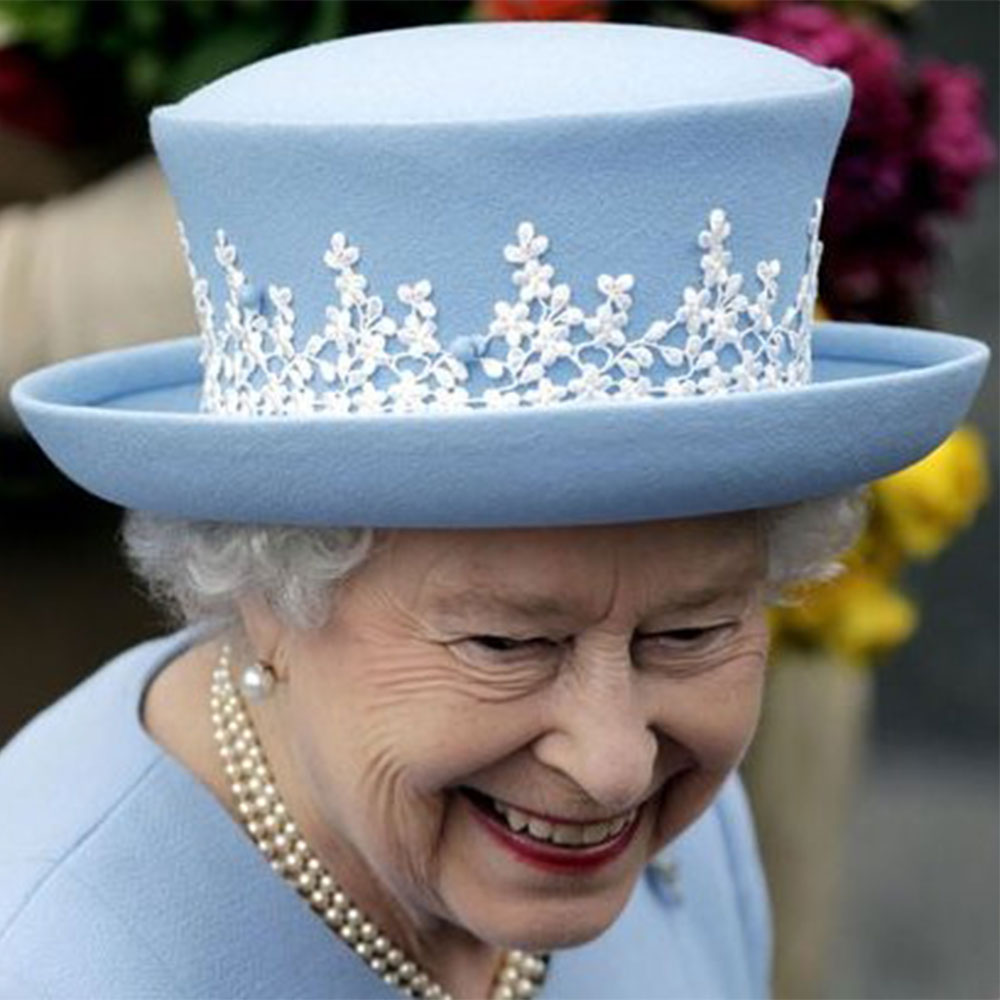
Queen Elizabeth II
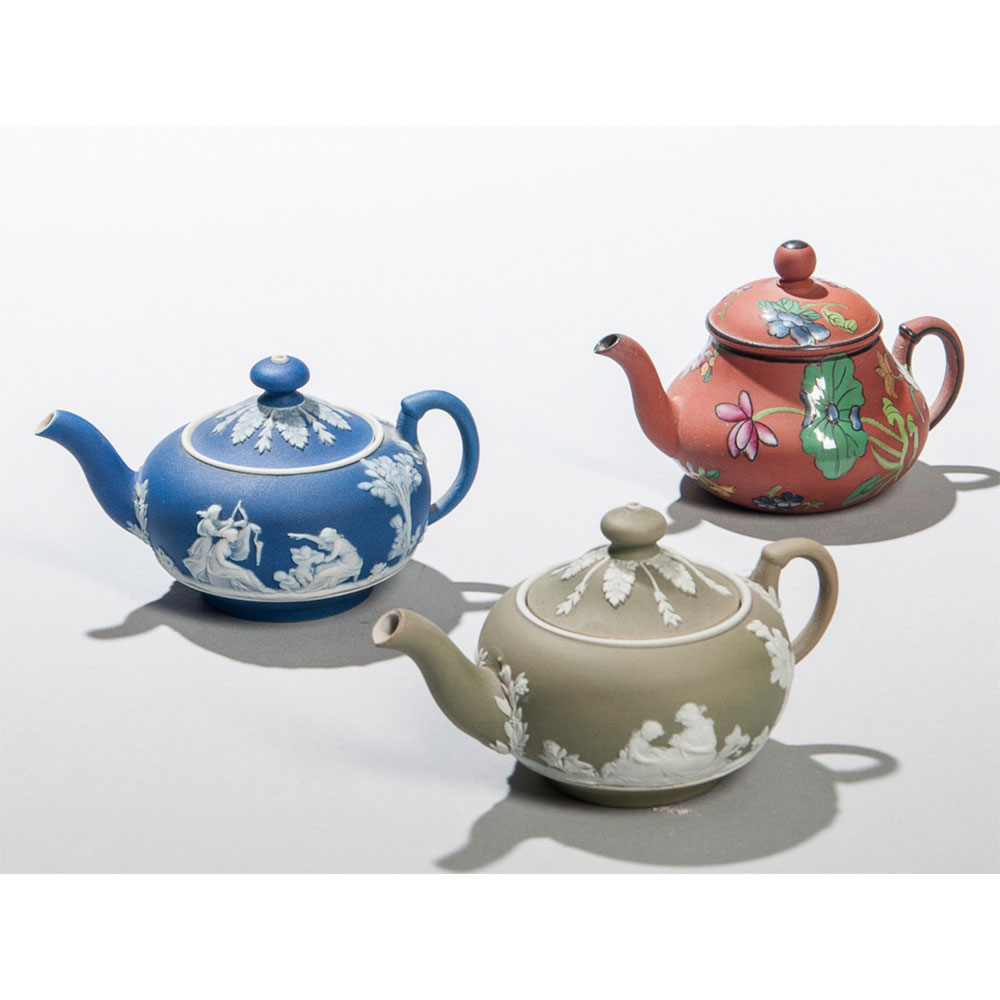
Wedgwood Mini Jasper Ware Teapots
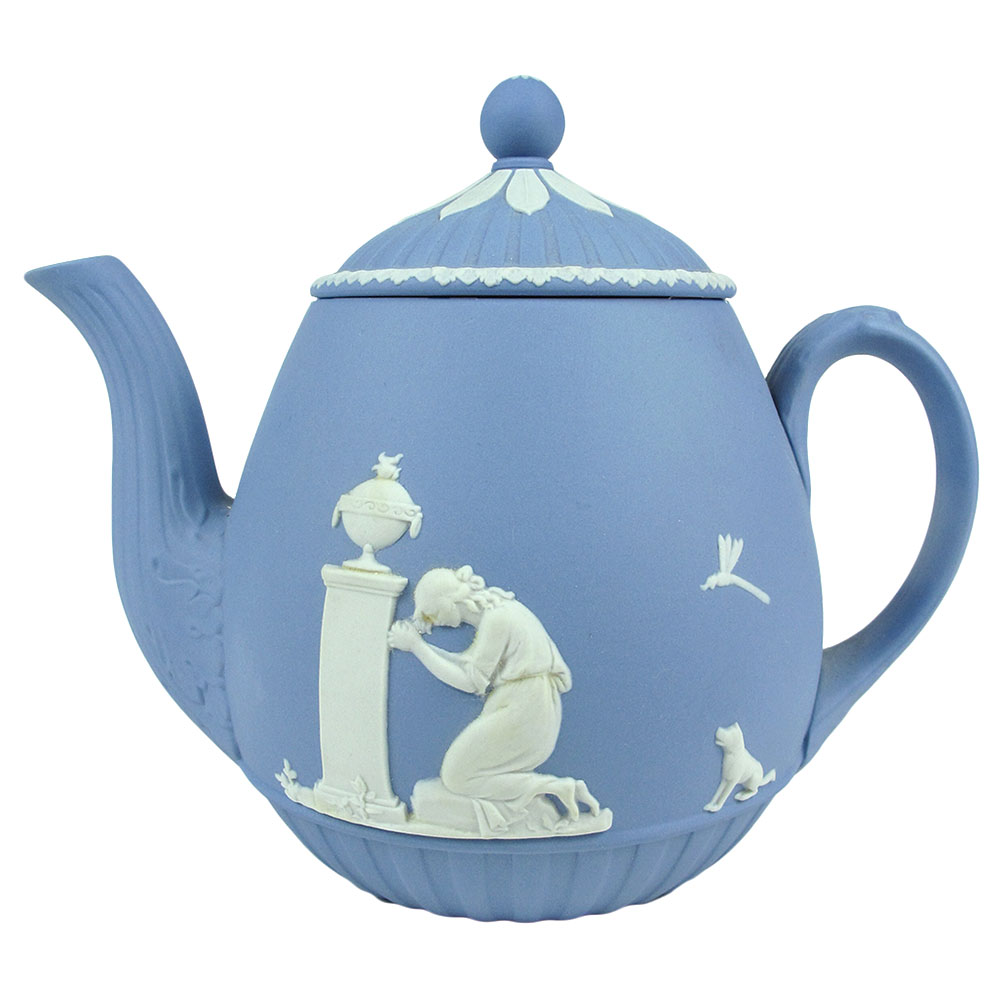
Wedgwood Charlotte at the Tomb of Werther Teapot
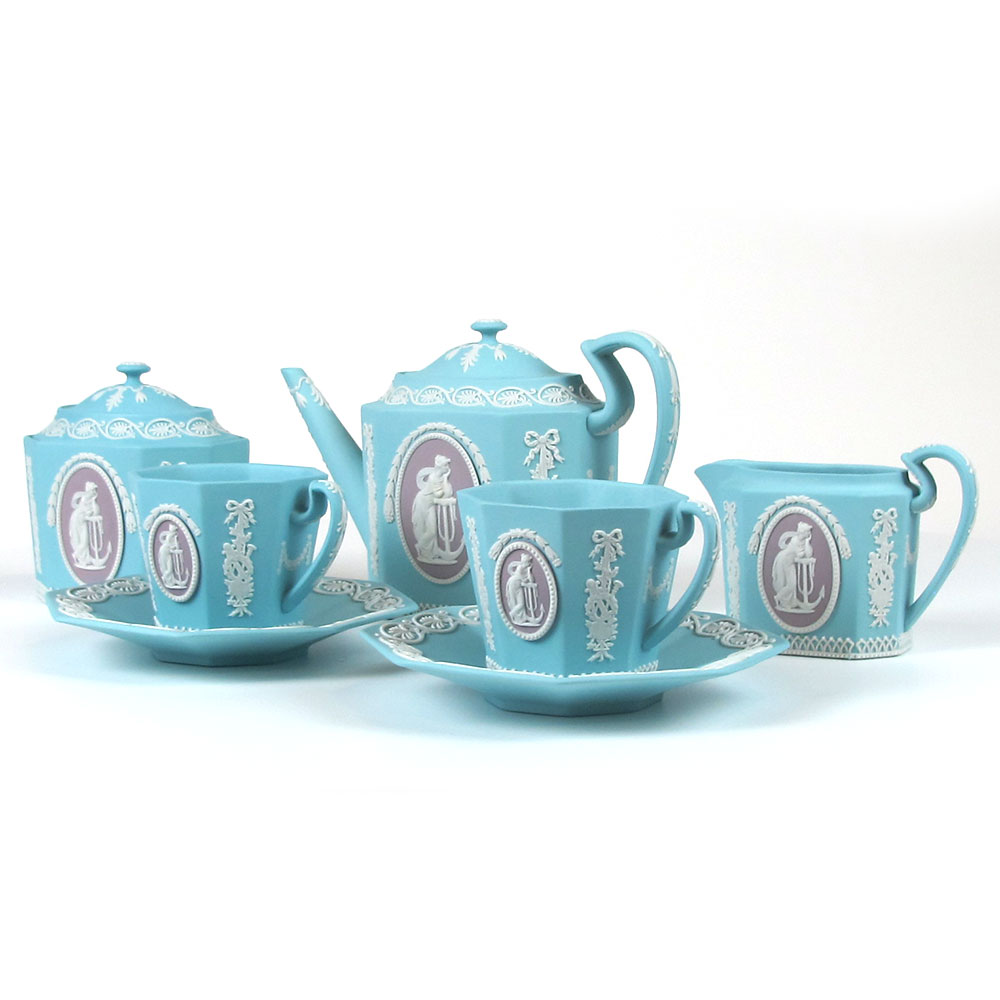
Wedgwood Lover’s Tea Set
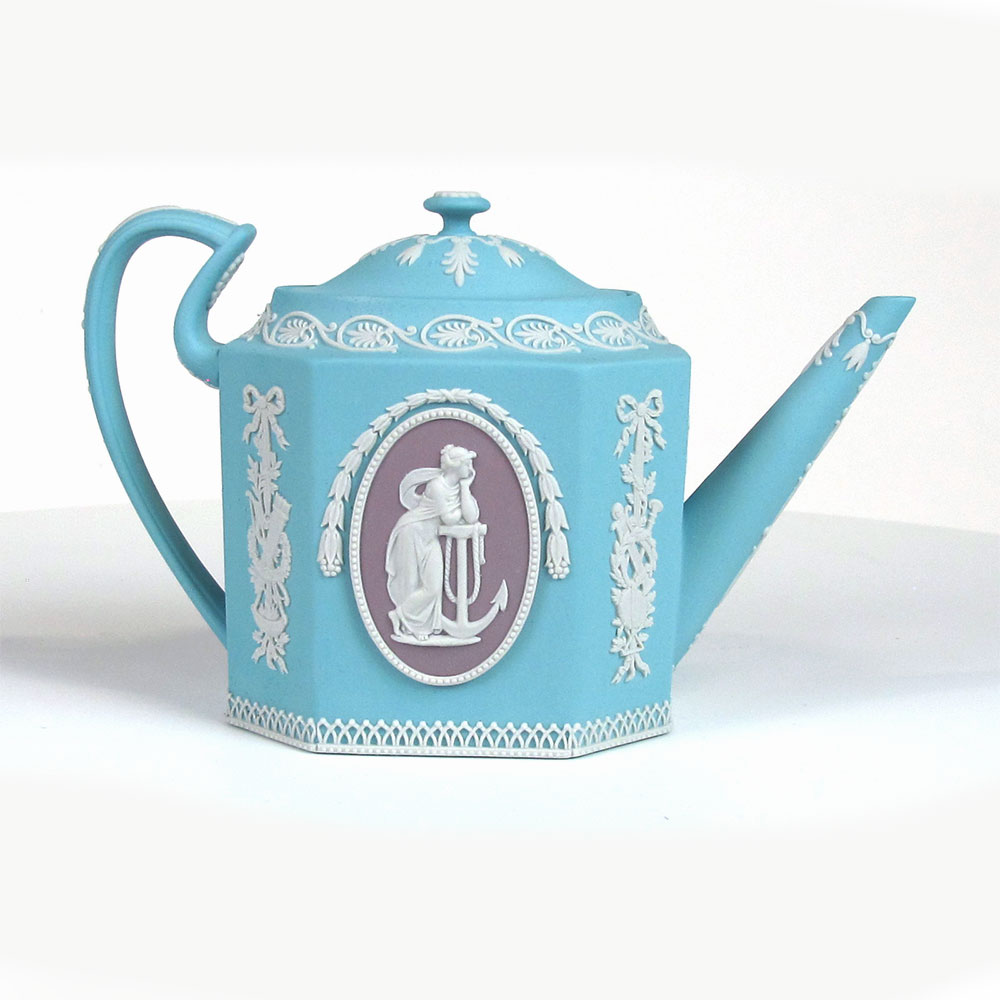
Wedgwood Lover’s Teapot
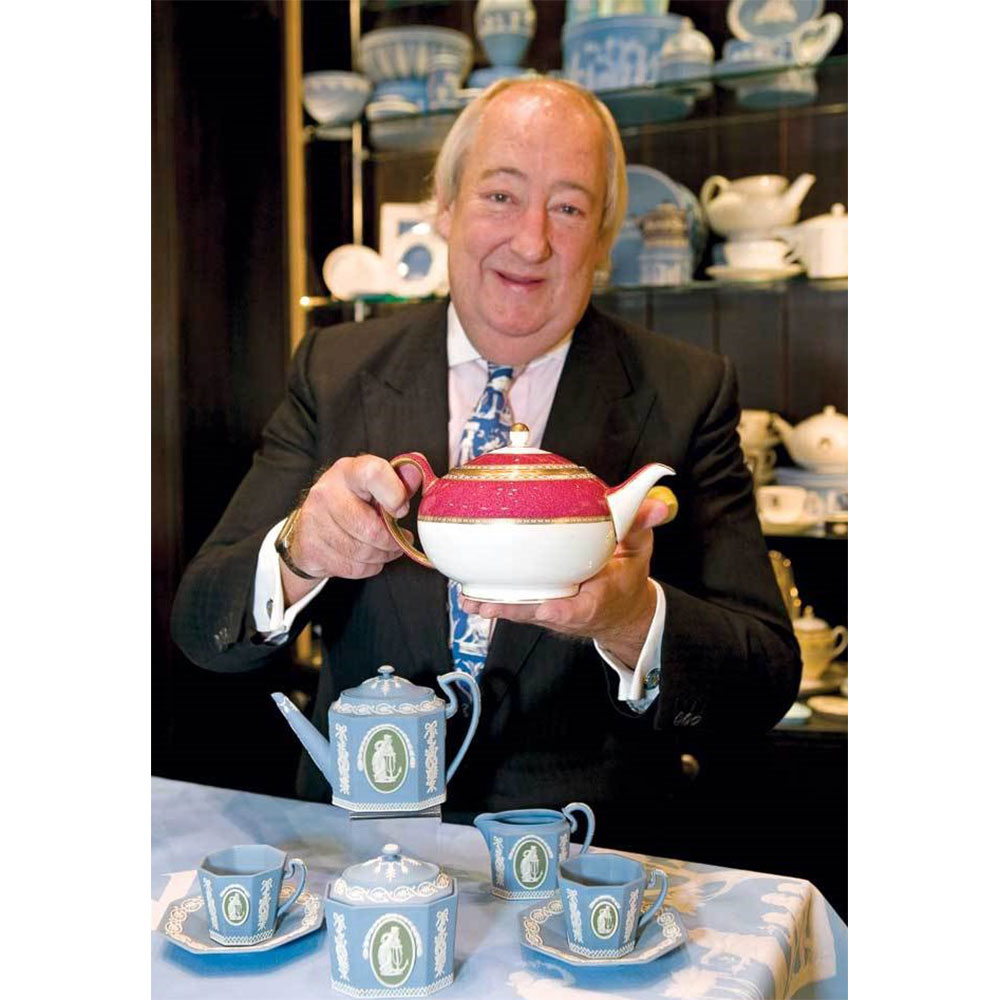
Lord Wedgwood
